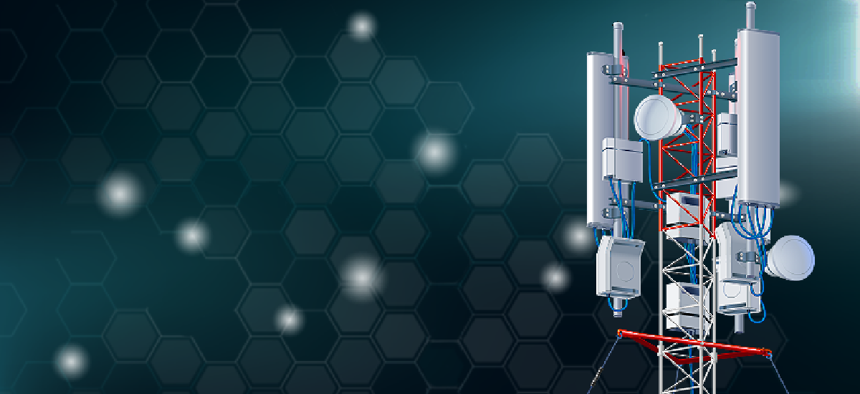FirstNet rolling out 5G, tower-to-core encryption


Connecting state and local government leaders
The FirstNet wireless broadband network for public safety is getting two new capabilities that will increase speed and security for first responders.
The FirstNet wireless broadband network for public safety is getting two new capabilities: 5G connectivity and tower-to-core encryption.
The biggest difference FirstNet users will notice with 5G is speed, said Scott Agnew, assistant vice president of product marketing for the FirstNet Program at AT&T, which is building the public safety network.
Currently, every packet on the nationwide 4G LTE network is prioritized and has preemption, and those capabilities on 4G LTE remain in place when using 5G. “That’s paramount above everything else,” Agnew said. “Without priority and preemption being available on 5G ... how can you expect first responders to rely on that technology?”
FirstNet intelligently and seamlessly connects to 5G where available, but when that nears capacity or users need priority and preemption, they shift back to 4G. Priority and preemption remain always on across LTE – Band 14 spectrum plus all of AT&T’s commercial LTE spectrum. “You get the best of both worlds,” Agnew said. “You get the speed when available, but you are always backstopped with reliability.”
The real benefits will become apparent as more high-bandwidth, low-latency 5G applications are developed, he said.
Today, public safety agencies have the applications and capabilities to do “just about anything they need over the 4G network. This just opens up the art of the possible,” Agnew said of 5G. “To really truly get the benefit of 5G, the applications need to be there, the augmented reality, the intelligent video solutions, the drone solutions,” he said. “But right now, our users are saying, ‘Wow, it’s fast.’”
Potential use cases, according to an April 1 announcement, include deploying cameras to the front gate of a stadium to screen attendees’ temperatures to minimize the spread of COVID-19 and using 5G in an ambulance to transmit patient data to the emergency room.
This month, responders in parts of 38 cities and more than 20 venues, such as stadiums, airports and other places where people concentrate, will get access to AT&T’s mmWave, or 5G+, spectrum. For several months, users in Houston, Texas, have been testing the technology that delivers 5G via millimeter wave spectrum.
Full 5G capabilities will be rolled out over time. To take advantage of them, first responders will need 5G-capable FirstNet devices such as the Samsung Galaxy Note 5G Ultra or the Netgear Nighthawk 5G Mobile Hotspot. They will also need a 5G rate plan, although there will not be an increase in cost, Agnew added.
The tower-to-core encryption builds on current network security.
“Today on a commercial carrier, they’ve got the 3GPP encryption from the device to the tower -- that’s standard -- but once it goes to the tower and the backhaul to the core, that’s left unencrypted,” Agnew said. “We’re solving that with our S1U – tower-to-core encryption. It creates a secure tunnel between the tower and the FirstNet core.”
To his knowledge, this is the first time the technology has been deployed on a national network.
The encryption is being tested now and will soon be rolled out in Cleveland and Houston before AT&T starts a phased rollout nationwide. It will be available for free anywhere there’s LTE coverage and users’ devices have a FirstNet SIM card. Agnew expects it to be fully deployed at the end of 2022.
Based on testing results, the added encryption and decryption do not add latency, he said.
“This is a multiphase approach. It’s building blocks: We’re building the core, we’re building [identity credential and access management], we’re building the dedicated SIM, we’re building S1U encryption. We’re not done. It will continue to evolve,” Agnew said.
The COVID-19 pandemic increased interest in FirstNet and its capabilities, he said. Testing and then vaccination centers relied on connectivity to operate, for example.
Also this year, AT&T introduced other features. One is FirstNet MegaRange, a high-power user equipment solution that improves coverage issues in dense urban environments or at the edge, where connectivity starts to drop off. Another is the Z-Axis capability, which lets users see where responders are within a multi-story building.
Band 14 and AT&T’s commercial LTE spectrum bands currently cover 2.71 million square miles of the country. More than 15,000 agencies and organizations -- accounting for more than 2 million connections nationwide -- have subscribed to FirstNet to date.
This article was changed April 16 to clarify details on the new features.




